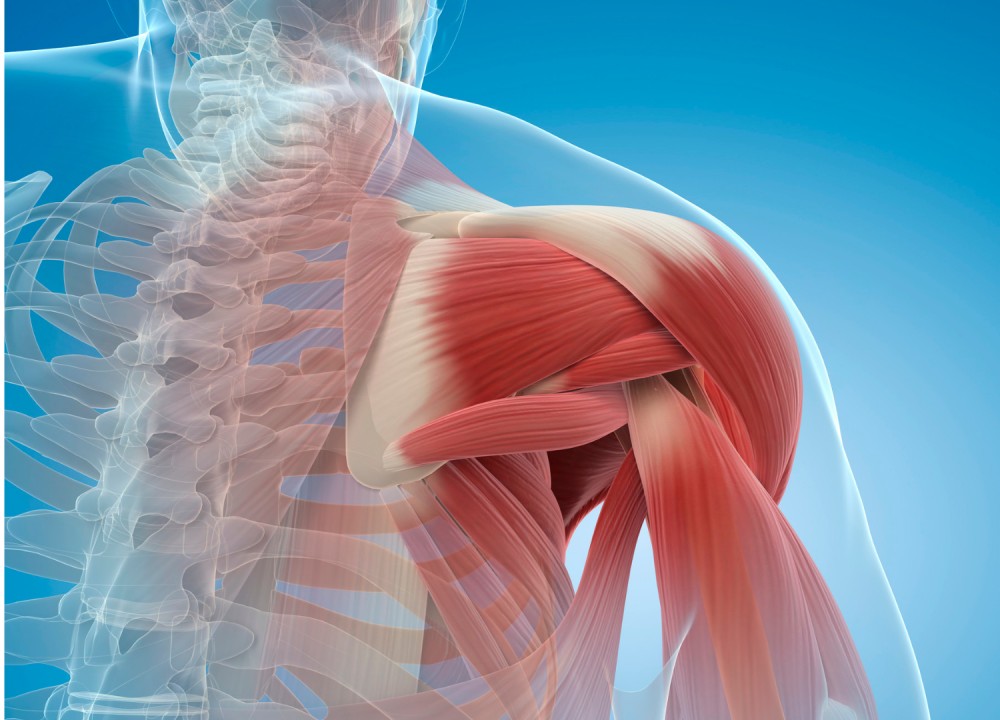In Focus: The Rotator Cuff- What Is It?
In Focus: The Rotator Cuff- What Is It?

So...what is the rotator cuff??
The rotator cuff is a group of four muscles and tendons that surround the shoulder joint. These muscles help to keep the shoulder stable and allow it to move in a wide range of motion. The rotator cuff is essential for activities such as overhead reaching, lifting, and throwing. Think of the shoulder like an construction site- the rotator cuff is like the site foreman, keeping the shoulder controlled while the big muscles around the shoulder do the heavy work.
Common rotator cuff injuries
There are several common injuries that can affect the rotator cuff. These include:
- Tendinitis: This is an inflammation of the tendons in the rotator cuff. It is often caused by overuse or repetitive strain.
- Calcific tendinitis: This is a condition in which calcium deposits form in the tendons of the rotator cuff. It can cause pain and stiffness in the shoulder.
- Rotator cuff tear: This is a tear in one or more of the tendons in the rotator cuff. It can be caused by a sudden injury or by overuse over time.
- Subacromial impingement: This is a condition in which the tendons of the rotator cuff rub against the bone and other structures in the shoulder joint. It can cause pain, weakness, and decreased range of motion in the shoulder.
Symptoms of rotator cuff injuries
The symptoms of rotator cuff injuries can vary depending on the severity of the injury. However, some common symptoms include:
- Pain in the shoulder, especially when lifting or using the arm overhead
- Weakness in the shoulder
- Stiffness in the shoulder
- A clicking or popping sensation in the shoulder
- Difficulty sleeping on the affected side
Diagnosis and treatment of rotator cuff injuries
The diagnosis of rotator cuff injuries is usually made by a doctor or physiotherapist. We will examine the shoulder and ask about your symptoms. In a minority of cases, imaging tests such as an ultrasound or MRI scan may be needed to confirm the diagnosis.
The treatment for rotator cuff injuries depends on the severity of the injury. Mild cases of tendinitis or subacromial impingement may be treated with relative rest, improving the control of the shoulder and strengthening, stretching of the muscles around the shoulder. Occasionally, more severe cases or rotator cuff tears may require injections, or surgery.
Preventing rotator cuff injuries
There are a number of things you can do to help prevent rotator cuff injuries, including:
- Warming up before exercising
- Cooling down after exercising
- Minimising repetitive overhead movements
- Strengthening the muscles in your shoulder
- Being aware of your posture and changing it regularly.
If you are experiencing pain or discomfort in your shoulder, it is important to seek help early to get a diagnosis and treatment. With good care, most rotator cuff injuries can be successfully managed with physiotherapy.
Here are some additional tips for preventing rotator cuff injuries:
- Use proper lifting techniques. When lifting heavy objects, keep your shoulders in a neutral position and use your legs to do most of the work.
- Minimise excessive overhead activity. If your job or hobbies require you to use your arms overhead frequently, take breaks and stretch your shoulders regularly.
- Strengthen your shoulder muscles. There are a number of exercises that you can do to strengthen your shoulder muscles. These exercises can be done with weights or resistance bands.
- Change your posture regularly. For example, prolonged periods hunched over a computer without changing position is not great for our shoulders.
By following these tips, you can help to reduce your risk of rotator cuff injuries.
We hope this blog post has been helpful. If you have any further questions, please do not hesitate to contact us or book online


